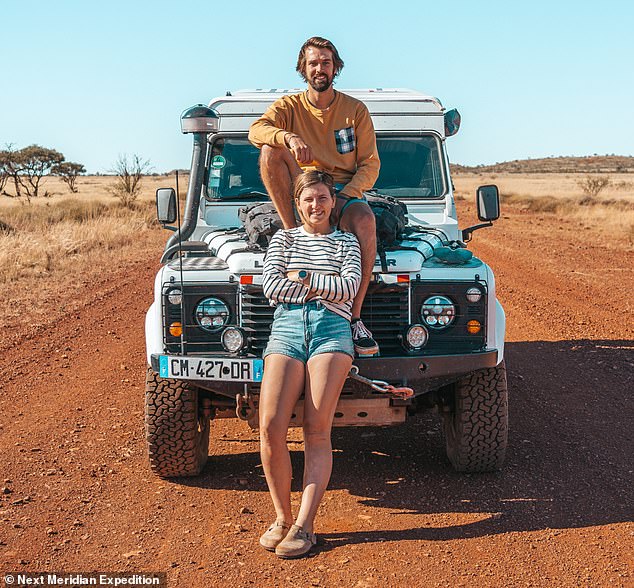Now this is a road trip.
Meet the couple who are in the middle of a tour around the planet.
Nick Chazee and Mathilde Vougny have so far covered 110,000 kilometers (68,350 miles) in Australia, Europe, South and North America in a very durable Land Rover Defender 110 that they have converted into a mini house on wheels.
In a chat with MailOnline Travel, they reveal the countries with the most welcoming people, the ones with the best and worst roads, and how Instagram has helped keep their spirits up.
Two of the countries that surprised the couple the most were Honduras and El Salvador. Mathilde says: “They are not necessarily that prominent and have a reputation for being dangerous, but we did not find that they were.” We were still camping there. You still meet very nice people. There are still beautiful beaches.’
Mathilde Vougny and Nick Chazee are traveling the world in a converted Land Rover Defender 110. They appear in the photo above in Australia, where they are currently located.
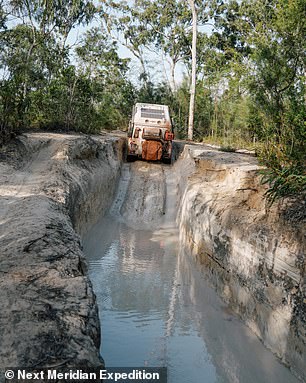
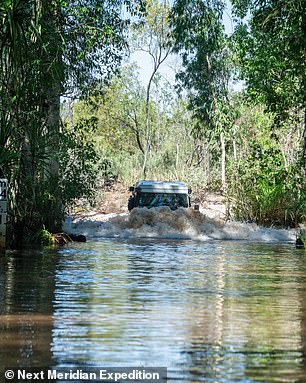
LEFT: The pair tackle the Frenchman’s Track in Cape York, Australia. RIGHT: Trying to navigate the Reynold River tracks in Australia’s Litchfield National Park. Their goal is to ‘get off the beaten track’ on their travels.
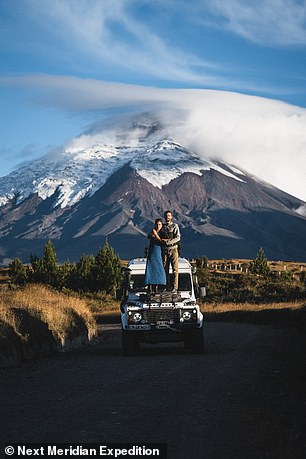
Nick and Mathilde have camped for most of their trip. They are photographed above in Cotopaxi National Park in Ecuador.
Where did you find the most welcoming people? The couple quickly answers: Colombia, followed by Canada and Argentina.
Friendly Colombia is also one of the top five places the couple has visited, along with Peru, Argentina, Norway and the United States. But it is a difficult choice. Malthilde, who is from France, says: ‘I think every country has something. The best beach is Costa Rica. For the landscape: Argentina.’
South America also receives praise for its relaxed attitude towards wild camping, which the couple has done for most of the trip.
They fondly remember waking up there “far from anything, with only llamas walking around.”
However, South America also presented the couple with some of the toughest driving challenges.
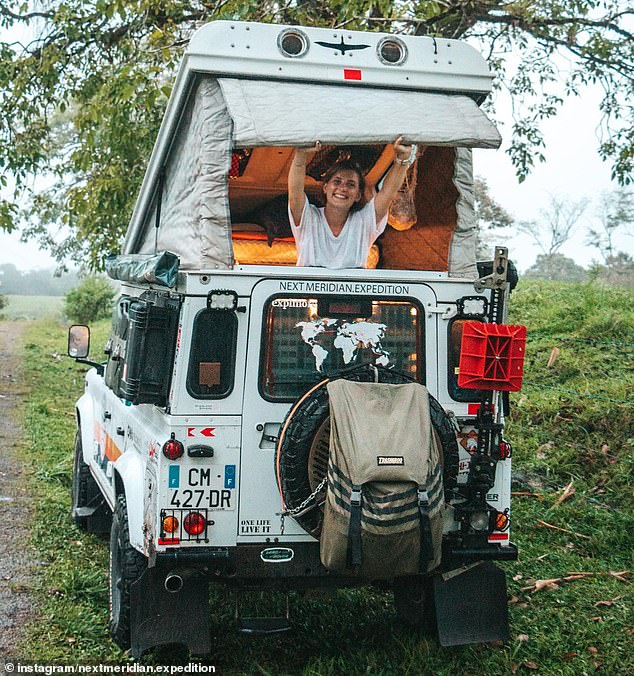
They chose their Land Rover Defender because of its “folding” roof, which “allows them to stay inside” and has a safety advantage: they can reach the driver’s seat without having to get out of the vehicle. The photo above was taken in Canon de Macho de Monte in Panama.
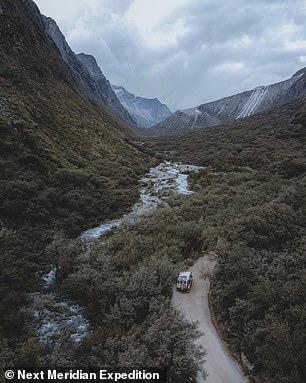
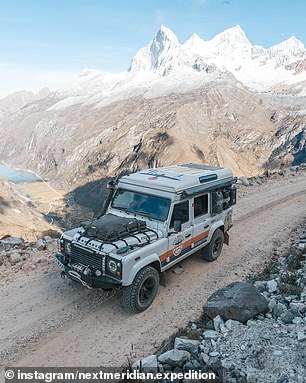
The pair tackled the Cordillera Blanca, a mountain range in northern Peru (above, left and right). They say that the most difficult roads they have faced so far have been in South America
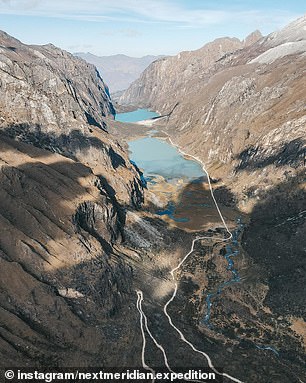
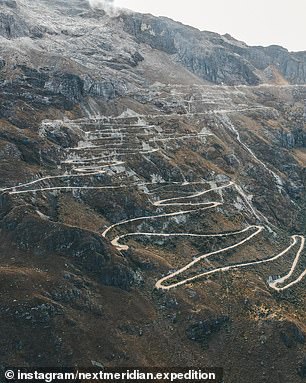
The images above show some of the winding roads of the Cordillera Blanca. Nick explains that many of the roads in South America are “very high” and congested with trucks carrying goods from one place to another.
The French-Italian Nick says that there they had to face some precarious mountain passes packed with trucks.
He explains: ‘The roads are very high, about 5,000 m (16,400 ft), and many of them are full of trucks transporting goods from one place to another. And that’s why they are tracks that hang from cliffs, full of gravel and rocks. They are very slow and sometimes also a little dangerous.
In Bolivia, the pair braved a 400 kilometer/248 mile area of ”trackless sand and dunes”, while in the Rainbow Mountains in Peru, they faced “very rocky tracks” at “really high altitude”.
But for Nick and Mathilde, the joy of the journey is in the challenge.
They say, ‘Honestly, you could drive from Alaska to Ushuaia, at the bottom of South America, in a two-wheel drive electric car if you wanted to and you’d be mostly on asphalt. We wanted to get off the beaten path. We didn’t want to make asphalt. We didn’t want to build highways.’
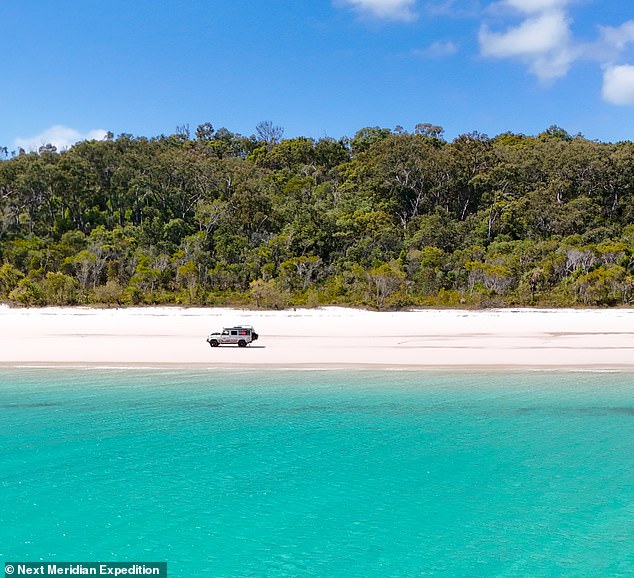
The couple is pictured here driving along a beach on K’gari Island in Australia.
The Pan-American Highway, a network of highways that stretches across the entire American continent, “is not that interesting,” the couple says. They explain: ‘There is a lot of dust and the roads are flat and very busy. When people say they’re driving on the Pan-American Highway, most of the time they get off that main road and go on the original roads.’
In the Andes, where the couple faced delays, Mathilde says driving was “more rewarding because there were people everywhere.” They add: “Even if there are delays, you can chat with people along the road.”
Meanwhile, in Australia, where the couple is currently based, driving, they say, “has probably been the least rewarding because you have to travel 700 km/434 miles to go anywhere.”
So how did you plan your epic adventure?
After becoming frustrated with the limits of a two-week vacation allowance at their jobs, the couple say they drew a “rough line” of the countries they wanted to visit and then consulted the Overlanding groups on Facebook for advice and honing their route.
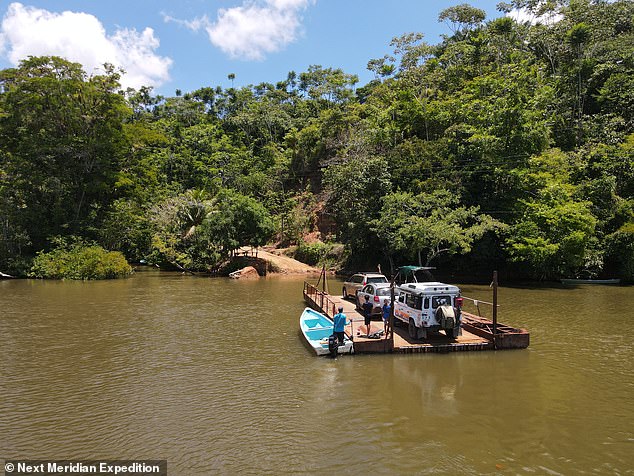
Mathilde says Costa Rica has the “best beaches.” This photo was taken on the Osa Peninsula in Costa Rica.
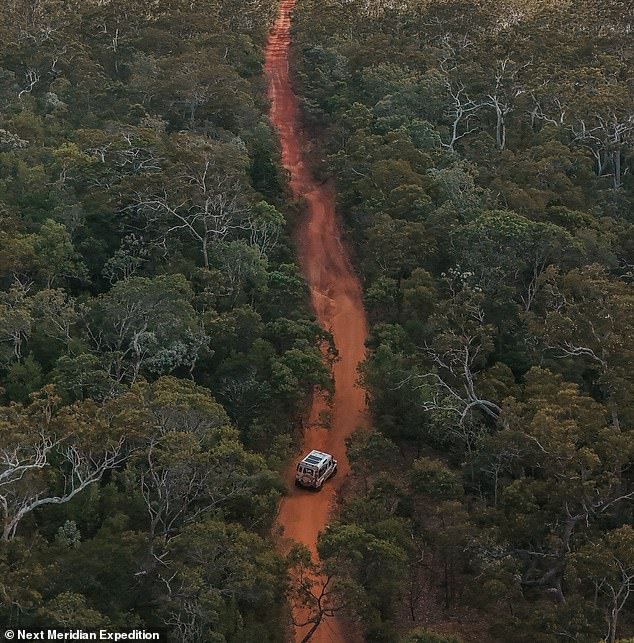
Mathilde and Nick have found a ready-made support network of Land Rover Defender fans around the world. Here they are photographed on the Old Telegraph Track in Cape York, Australia.
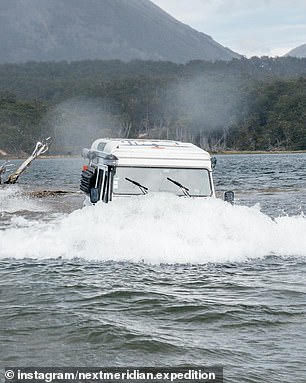
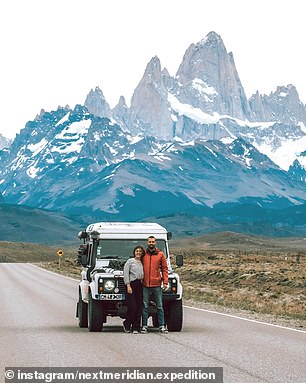
LEFT: The couple in the Tierra del Fuego archipelago in Argentina. RIGHT: Los Glaciares National Park in Argentina
They chose their Land Rover Defender because of its “folding” roof, which “allows them to stay inside” and has a safety advantage: they can reach the driver’s seat without having to get out of the vehicle.
And with a Land Rover Defender, there’s a ready support network around the world.
Fans of the brand followed the couple’s journey on Instagram, with Mathilde revealing: “In every country, there was someone with a Land Rover Defender who would help us if we needed anything. “They would always welcome us very well.”


